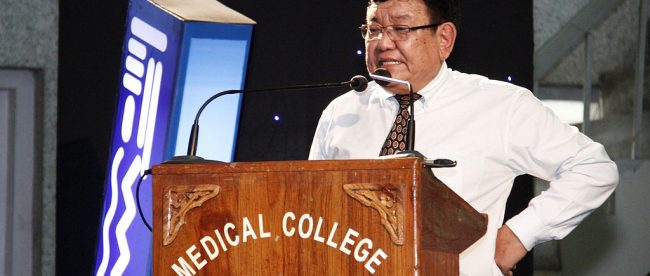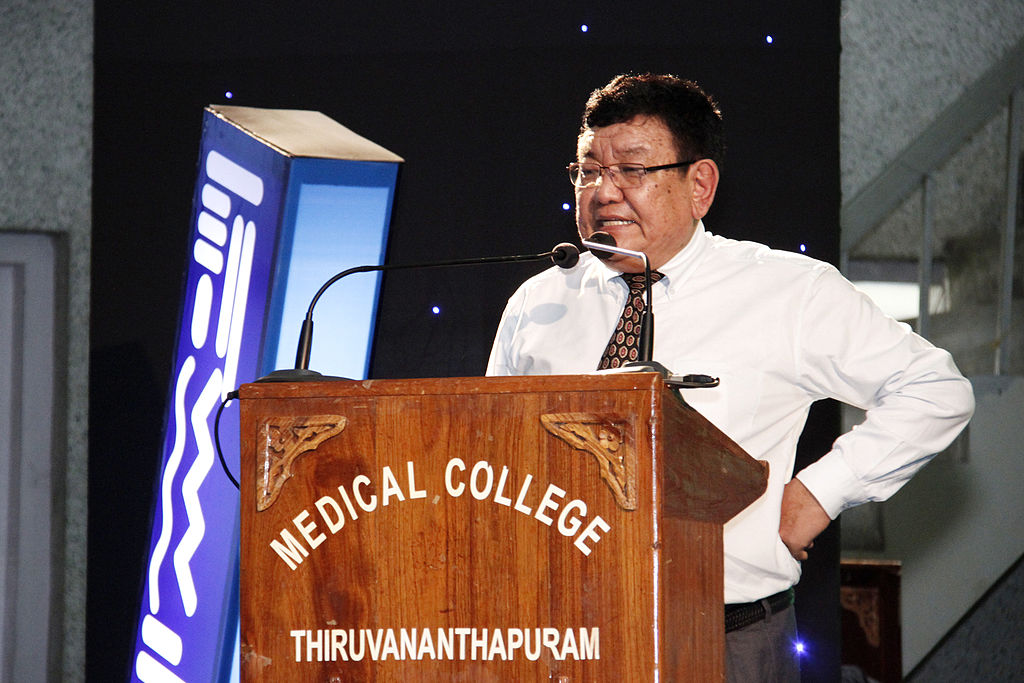The Doctor with a Vision for Vision


Pictured above is Dr. Sanduk Ruit. And if you can see that picture, you probably take your vision for granted. In the United States and developed nations, blindness is generally very uncommon — according to the CDC, only about a quarter of one percent of Americans are blind. But in Nepal, the numbers are often three or four times higher. The reason: cataracts. According to an (admittedly outdated) study from 1985, Nepal’s “nationwide blindness prevalence rate is 0.84%. Cataract is the leading cause of blindness, accounting for over 80% of all avoidable blindness.”
But that’s getting better. Today, more than 100,000 Nepalese people — and many others around the world — can see because of Dr. Ruit.
Born in a small Himalayan village in Nepal in 1954, Dr. Ruit grew up in an area where avoidable blindness was hardly uncommon — understandably, given the conditions of his childhood. His village of about 200 people, as summarized on his Wikipedia entry, has “no electricity, no school, no health facility, or modern means of communication, and lies blanketed under snow for six to nine months a year” to this day. His survival was a miracle in and of itself — all three of his siblings died before reaching adulthood. His education, doubly-so; his parents were illiterate and the nearest school was an 11-day walk from their village.
But his parents insisted — and that’s saying a lot, given the environment — that Sanduk receive an education. Before his 30th birthday, Ruit was not only a trained ophthalmologist but also one focused on bringing sight to his fellow Nepalese.
The problem, Dr. Ruit and others noted, wasn’t a question of medical know-how, but one of cost. We know how to repair cataracts — but doing so is expensive and requires follow-up care. Nick Kristof, for the New York Times, explains:
In the United States, cataract surgery is typically performed with complex machines. But these are unaffordable in poor countries, so Dr. Ruit built on the work of others to pioneer and refine small-incision microsurgery to remove cataracts without sutures. At first, skeptics denounced or mocked his innovations. But then the American Journal of Ophthalmology published a study of a randomized trial finding that Dr. Ruit’s technique had exactly the same outcome (98 percent success at a six-month follow-up) as the Western machines.
Per Reuters, “one operation, which could cost up to $3,000 in the West, costs less than $300 even for the richest person in Nepal. The average cost is $115, and those who cannot pay get the same service for free.”
And the procedure is not only cheaper than the standard of care in the States, but it is also much quicker. Dr. Ruit and his team operate an eye clinic in Nepal, yes, but they also set up makeshift clinics in remote areas, allowing him to remove the cataracts of dozens of people in just a few hours. According to CNN, “in the past 30 years, Ruit has personally restored the sight of more than 100,000 people across Asia and Africa.” That’s about ten people per day for three decades straight. And that’s only the tip of the iceberg; Dr. Ruit has “taught his rapid-fire technique to countless other eye surgeons in parts of the world as isolated as North Korea,” again per CNN.
Bonus fact: Nepal has seven provinces. One is named “Province No. 1” and another is named “Province No. 2.”
From the Archives: The Solution to an Unanswerable Question: How cataract removal helped solve a philosophical puzzle.
